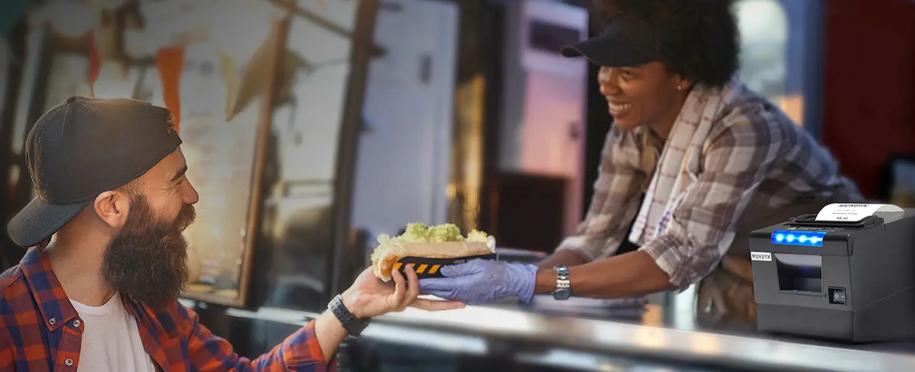The Essential Guide to Choosing the Perfect Receipt Printer for Small Business

In today's fast-paced business environment, efficiency and reliability are key to success. One often overlooked but crucial piece of equipment for small businesses is the receipt printer. Whether you run a retail store, a restaurant, or a service-based business, a reliable receipt printer can significantly enhance your operations. In this comprehensive guide, we'll explore everything you need to know about choosing the perfect receipt printer for your small business.
Introduction to Receipt Printers
A receipt printer is a specialized printer designed to print receipts quickly and efficiently. Unlike regular printers, receipt printers are built to handle high volumes of printing, often in fast-paced environments. They are designed to be compact, durable, and easy to use, making them ideal for small businesses.
Why Invest in a Receipt Printer?
Professionalism: A receipt printer ensures that your receipts look professional and are easy to read.
Types of Receipt Printers
USB Thermal Receipt Printer

WiFi Thermal Receipt Printer

Compatibility with Major POS Systems: The receipt printer is highly compatible with popular POS systems such as Square (Square Register POS & Square Stand POS) and supports ESC/POS command-based Windows/MAC systems. This compatibility makes it a versatile choice for various business setups.
Key Features to Consider When Choosing a Receipt Printer
Print Speed
The speed at which a receipt printer can produce receipts is crucial, especially in high-volume environments. Look for a printer with a print speed that matches your business needs. Thermal printers typically offer faster print speeds compared to impact printers.
Paper Capacity
The paper capacity of a receipt printer can affect how often you need to reload it. A larger paper capacity means fewer interruptions, which can be particularly important during busy periods. Consider the size of your business and the volume of receipts you print daily when choosing a printer.
Connectivity Options
Modern receipt printers offer various connectivity options, including USB, Wi-Fi, and more. Choose a printer that is compatible with your existing POS system and other devices. For example, if you use a mobile POS system, a Bluetooth or Wi-Fi-enabled printer may be the best choice.
Durability and Reliability
Investing in a durable and reliable receipt printer can save you time and money in the long run. Look for printers from reputable manufacturers with a proven track record of quality and reliability. Reading customer reviews and seeking recommendations from other business owners can also help you make an informed decision.
Noise Level
If your business environment is sensitive to noise, such as a small café or boutique, consider the noise level of the printer. Impact printers, while durable, can be quite noisy. Thermal printers, on the other hand, are generally quieter and may be a better fit for these environments.
Maintenance and Troubleshooting
Regular Cleaning
Regular cleaning is essential to keep your receipt printer in good working condition. Dust and debris can accumulate inside the printer, causing jams and other issues. Use a soft, dry cloth to clean the exterior and interior of the printer regularly. Avoid using harsh chemicals, as they can damage the printer's components.
Paper Roll Replacement
Ensure that you use the correct type of paper for your printer. The printers require Receipt Printer Paper. When replacing the paper roll, follow the manufacturer's instructions to ensure proper installation. Avoid overloading the printer with too much paper, as this can cause jams.
Firmware Updates
Regular firmware updates can help ensure that your receipt printer operates smoothly and efficiently. Check the manufacturer's website for updates and follow the instructions to install them. Firmware updates can improve performance, fix bugs, and add new features.
Conclusion
Choosing the right receipt printer for your small business is an important decision that can significantly impact your operations. Consider factors such as print speed, paper capacity, connectivity options, durability, and noise level when making your choice. By investing in a quality receipt printer and following proper maintenance procedures, you can ensure that your business runs smoothly and efficiently. Whether you run a retail store, a restaurant, or a service-based business, a reliable receipt printer is an essential tool for success.
FAQS
What connectivity options should I consider?
Most thermal receipt printers come with a range of connectivity options, including USB, Wi-Fi, and more. USB is the most common and reliable for connecting to a computer or a POS terminal. Wi-Fi and Bluetooth offer wireless printing capabilities, providing flexibility in printer placement.
How do I determine the right receipt printer based on my business size and transaction volume?
Assess the average number of receipts you need to print per day. If you have a high-volume business, a faster and more durable printer is essential. For smaller businesses with fewer transactions, a more basic model may suffice.
What factors mainly determine the quality of printing?
Print quality is related to factors such as the printer's resolution, printing method, and the quality of consumables. The higher the resolution of the thermal printer is, the clearer and more detailed the receipts printed will be. In addition, using qualified paper, ink, and other consumables can also effectively improve the printing quality.

